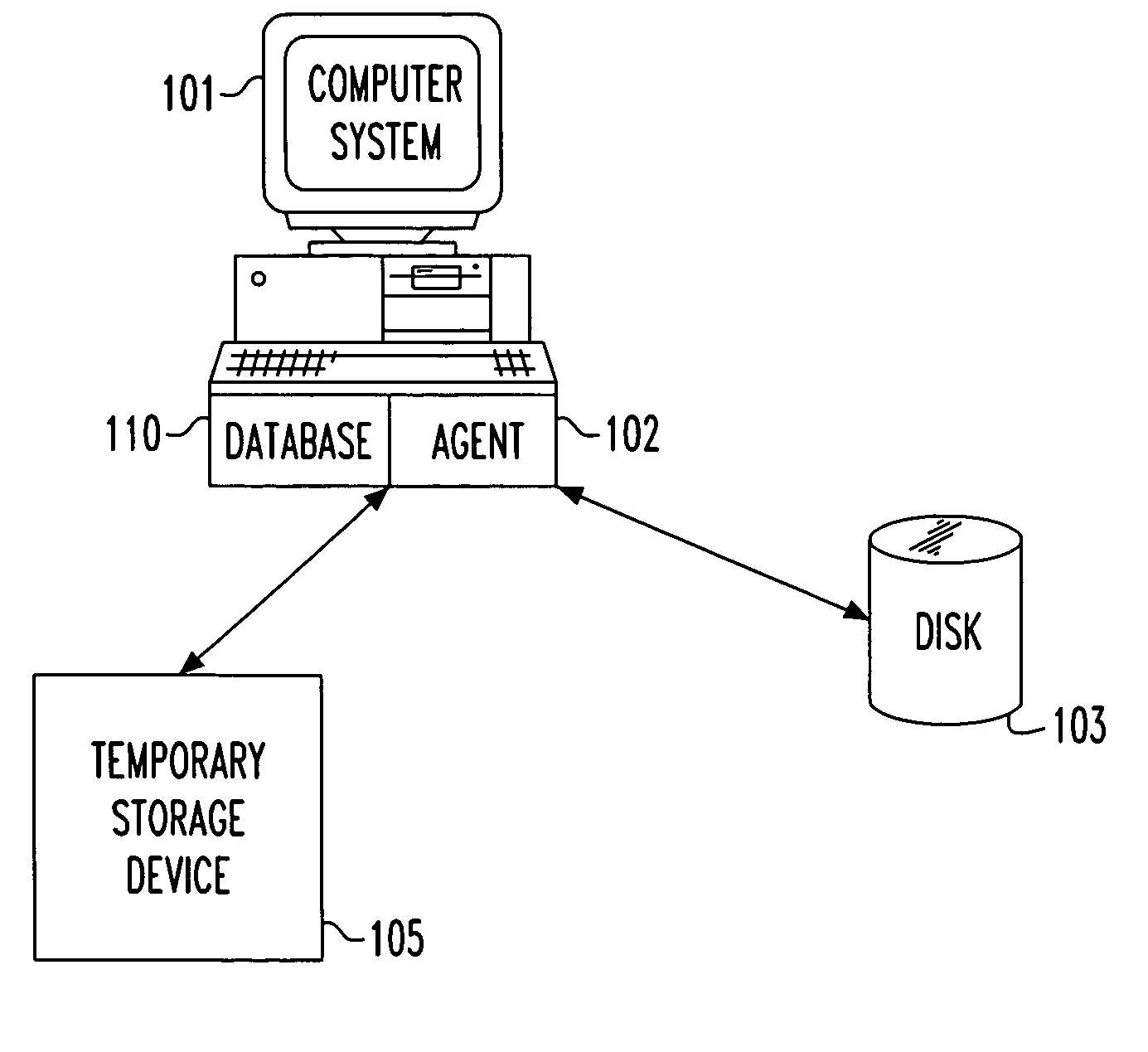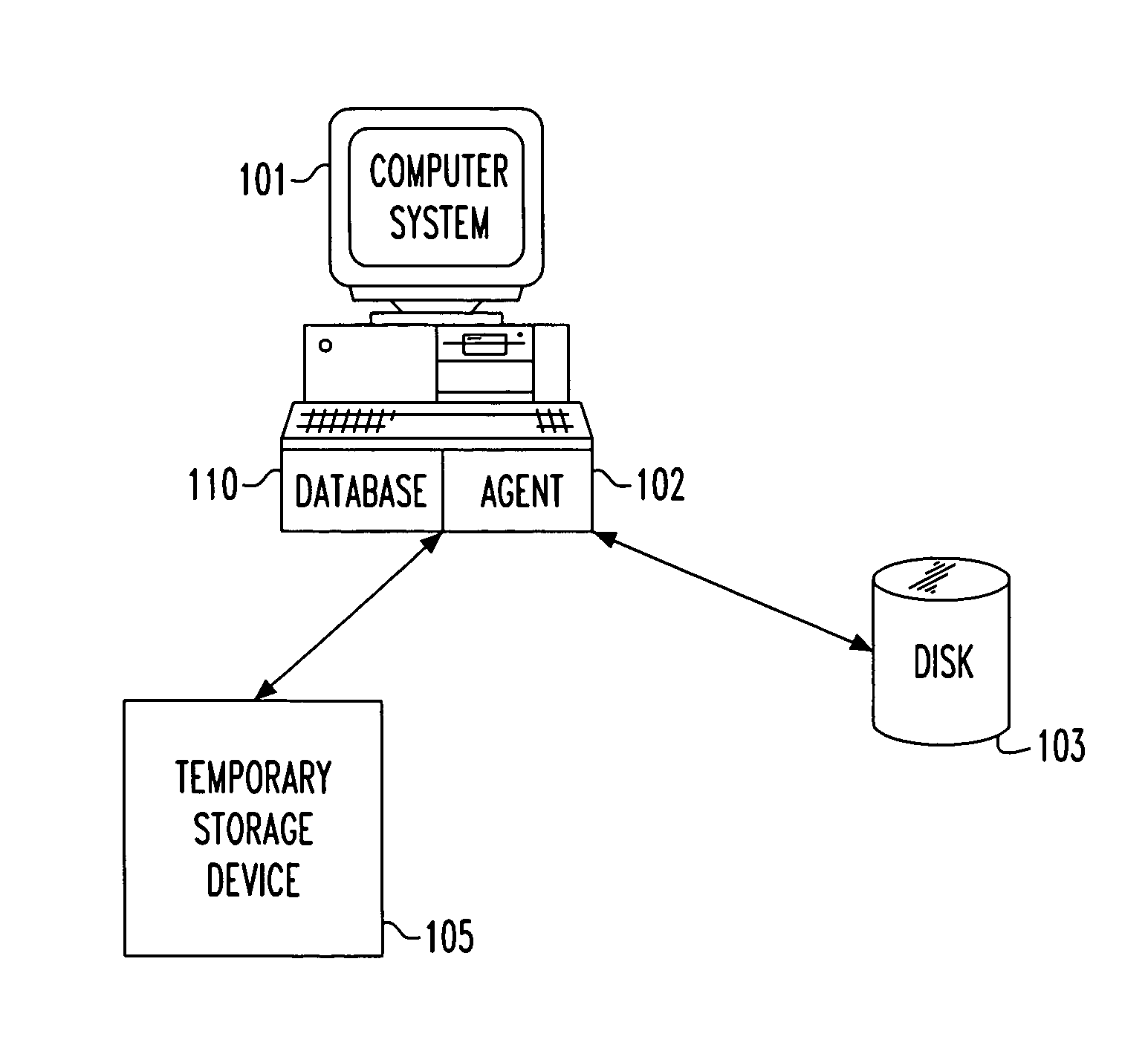Intelligent caching of working directories in auxiliary storage
a working directory and intelligent technology, applied in the direction of memory address/allocation/relocation, instruments, climate sustainability, etc., can solve the problems of large disk activity, slow operation, and large amount of battery power, and achieve the effect of large battery power savings and faster operation
- Summary
- Abstract
- Description
- Claims
- Application Information
AI Technical Summary
Benefits of technology
Problems solved by technology
Method used
Image
Examples
Embodiment Construction
[0016]FIG. 1 illustrates in block diagram form a battery-powered computer system 101 having an auxiliary agent program 102 that will be described below. The computer labeled system 101 schematically includes the computer CPU, disk storage, RAM, and conventional caches. Hard disk drive 103 and temporary storage 105 are also shown.
[0017] The agent program 102 communicates with a database 103 that may be conveniently located in RAM or in temporary storage 105. The function of data base 110 is to keep track of the location of data and program segments that would ordinarily be placed on the hard drive.
[0018] In operation, large programs move segments of the program from the long-term storage on the hard drive into RAM, to improve access time. There is not enough room in RAM to hold many popular programs, plus the operating system and possibly other programs. Thus, the typical large application program (or, equivalently a portion of the operating system) will contain program language th...
PUM
 Login to View More
Login to View More Abstract
Description
Claims
Application Information
 Login to View More
Login to View More - R&D
- Intellectual Property
- Life Sciences
- Materials
- Tech Scout
- Unparalleled Data Quality
- Higher Quality Content
- 60% Fewer Hallucinations
Browse by: Latest US Patents, China's latest patents, Technical Efficacy Thesaurus, Application Domain, Technology Topic, Popular Technical Reports.
© 2025 PatSnap. All rights reserved.Legal|Privacy policy|Modern Slavery Act Transparency Statement|Sitemap|About US| Contact US: help@patsnap.com


